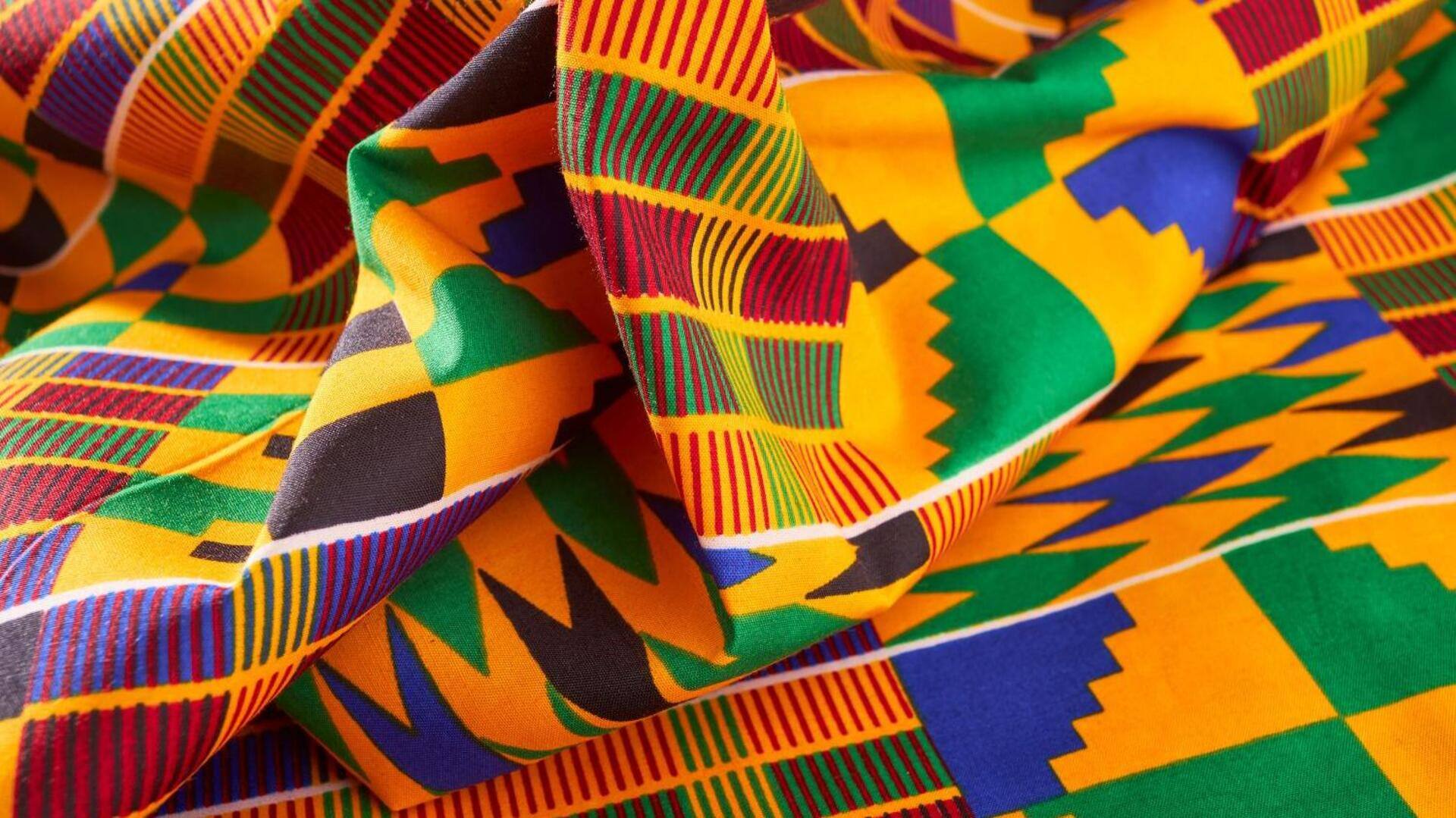
Ghana's kente cloth: Weaving culture, color, and history
What's the story
Ghana's kente cloth weaving is a colorful tradition that has been handed down generations. Renowned for its vivid hues and elaborate patterns, kente cloth carries cultural importance in Ghanaian society. Every design narrates a story or sends out a message, making it more than mere fabric. Here, we take a look at five time-honored traditions of kente weaving which stand the test of time today.
Loom weaving
The art of loom weaving
Loom weaving lies at the heart of kente cloth creation. Using traditional looms, artisans weave narrow strips of the fabric, which are then sewn together to create larger pieces. This technique demands precision and patience, with each strip taking hours, if not days, to complete. It entails interlacing threads in defined patterns, creating the unique geometric designs that define kente cloth.
Patterns and colors
Symbolic patterns and colors
Kente cloth is famous for its symbolic patterns and colors. Each pattern has a different meaning, often depicting a proverb or a historical event. The colors themselves also have meanings; for instance, gold stands for wealth and royalty, while green symbolizes growth and renewal. All of these combine to make textiles that are not just visually striking but culturally rich too.
Community role
Community involvement in production
The production of kente cloth is often a community effort, with several artisans working together. Families may specialize in different aspects of the process, from dyeing threads to weaving strips on looms. This collaborative approach ensures the preservation of techniques passed down through generations, while fostering a sense of community pride.
Ceremonial use
Ceremonial uses and significance
Kente cloth occupies a central place in Ghanaian culture, commonly worn at weddings, festivals, and important events as an emblem of status or celebration. The pattern selected communicates not just messages about the wearer's heritage but also their intentions during such occasions, representing a profound cultural significance that goes beyond its visual beauty. This custom highlights the cloth's essential place in conveying identity and social beliefs.
Modern adaptations
Modern adaptations keeping tradition alive
While traditional methods remain popular among artisans today, there have been modern adaptations aimed at keeping this craft alive amidst changing times, such as incorporating contemporary designs into classic motifs without losing their original essence. Thus, appealing both locally and internationally, ensuring continued relevance within the global fashion industry.